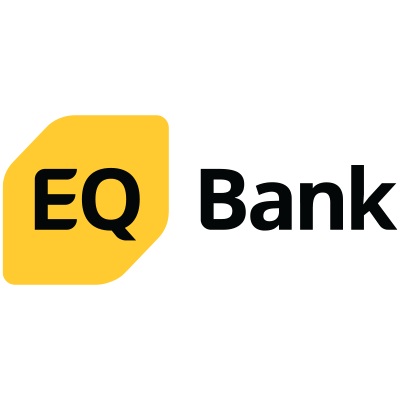Canada’s annual rate of inflation, as measured by the Consumer Price Index (CPI), rose to 2.9% in May, up from 2.7% in April. Many economists expected a slight decrease in the rate, but higher rent, grocery and travel costs contributed to a rise in inflation.
The Bank of Canada (BoC) closely monitors the rate of inflation in Canada and aims to keep it within a target range (more on this below).
The latest inflation data is unwelcome news for Canadians who hope the BoC will cut its benchmark interest rate at its next rate decision on July 24. In June, the central bank dropped its key interest rate for the first time in four years, from 5% to 4.75%. June CPI data will be released on July 14, meaning the BoC will have one more look at inflation data ahead of its July rate decision.
What does inflation mean?
Inflation is the rising cost of goods and services, which leads to a decrease in the purchasing power of money.
Say you have $10. Last year, a can of tomato sauce cost $5, so you could afford two cans. But the cost per can has risen to $6.50, which means now you can only afford one. Over time, you’ll be able to purchase fewer and fewer things with the same $10 of income. When your income growth does not rise in sync with inflation, your purchasing power erodes and your standard of living decreases.
What is a good rate of inflation?
Some people think we should aim for 0% inflation. However, most economists, the BoC and other central banks see some inflation as desirable and reflective of a healthy economy. The BoC manipulates the Canadian money supply, as well as interest rates, to maintain a target rate of 2% inflation—the midpoint of its inflation-control target range of 1% to 3%.
Inflation lower than 2% suggests there is an excess of supply, which means the economy is struggling; this leads to less production and fewer jobs.
Inflation higher than 2% signals that the economy is growing too quickly. Typically, this means Canadians are earning too much income—between their jobs, government benefits and other sources—and snapping up goods so fast that there are supply shortages, and therefore rising prices.
Why was inflation so high in Canada in 2023?
One of the reasons inflation is so high in Canada is that the federal government and the BoC worked together during the pandemic to increase the amount of money in circulation. The federal government spent north of $500 billion on pandemic-related benefits in 2020 and 2021, largely financed with bonds the BoC purchased. Canadians’ savings rate skyrocketed, and the median after-tax income increased 7% from 2019 to 2020, largely thanks to these programs.
Worried about deflation because of how many Canadians were losing their jobs due to lockdowns, the BoC decreased the key interest rate to a historic low of 0.25% to encourage investing and spending. At the same time, global events, such as the war in Ukraine and China’s COVID-zero policies, created supply shortages for commodities like grain and oil and reduced global production.
Excess money in the economy plus fewer goods equals rising prices.
How has the Bank of Canada responded to inflation?
Between March 2022 and July 2023, the BoC raised its key lending rate from 0.25% to 5%, with the goal of slowing price growth and reaching its 2% inflation target. With the rate of inflation slowing through much of 2024, the BoC lowered its benchmark rate from 5% to 4.75% in June. Many economists expect to see more rate cuts at some point in 2024.
How does inflation affect my investments?
Inflation erodes the profit you make on an investment.
Let’s say you purchase a stock that rises 5% in one year. Your “nominal” rate of return before factoring in any fees, taxes or inflation is 5%. But if inflation rises 2% that same year, your “real” rate of return is only 3%. It’s important to calculate your investment profit using a real rate of return so you can properly evaluate where to put your money. (Find out how inflation might affect your retirement investments.)
As a rule, it’s difficult to make a profit with any investment during times of high inflation—your purchasing power decreases faster than most investments can grow. But some investments are more resilient against inflation than others.
Stocks
Inflation can negatively affect the stock market, because rising costs and interest rates usually affect companies’ bottom lines. Investors are also psychologically hesitant to put money in the markets if they feel it’s too risky, which further contributes to market drops. But this scenario can also provide an opportunity to buy high-quality, large-cap companies at a slight discount.
Bonds
When inflation rises, bond prices fall, and vice versa. That’s why long-term bonds can be a tricky bet. A short-term bond, however, such as a one-year bond, can be a good place to park money during high inflation, until it’s clearer where inflation and interest rates are going.
GICs
Guaranteed investment certificates (GICs) may appear to be a good deal during times of high inflation and high interest rates. As of late June 2024, you can still find GICs with rates around 5%, higher than the 1% or so offered a few years ago. That may sound great, but when inflation is running even higher—for example, the 5% to 8% we saw in 2022—you could have a negative real rate of return. Nevertheless, GICs are a reasonable alternative for low-risk investors who would otherwise leave their money in cash.
MoneySense is an award-winning magazine, helping Canadians navigate money matters since 1999. Our editorial team of trained journalists works closely with leading personal finance experts in Canada. To help you find the best financial products, we compare the offerings from over 12 major institutions, including banks, credit unions and card issuers. Learn more about our advertising and trusted partners.
ETFs
Exchange-traded funds (ETFs) are a basket of assets, usually stocks, bonds or a combination of the two. Canadian investors can choose from a wide range of ETFs, with varying levels of performance and risk. Broad-based market ETFs tend to be a conservative and easy choice for investors during all market cycles, if they are willing to hold for the long term.
What to expect in 2024
The BoC is determined to bring inflation back down to 2%. Recent CPI readings indicated inflation was cooling and moving toward the BoC’s 2% target. The latest inflation report marks a reversal of this trend, although the rate remains within the central bank’s preferred range of 1% to 3%.
Read more about inflation:
- Compound interest calculator: How interest grows
- What does high inflation mean for your retirement savings?
- A contrarian approach to inflation, interest rates and the markets
The post Canada’s inflation rate—and what it means for your investments appeared first on MoneySense.





0 Commentaires